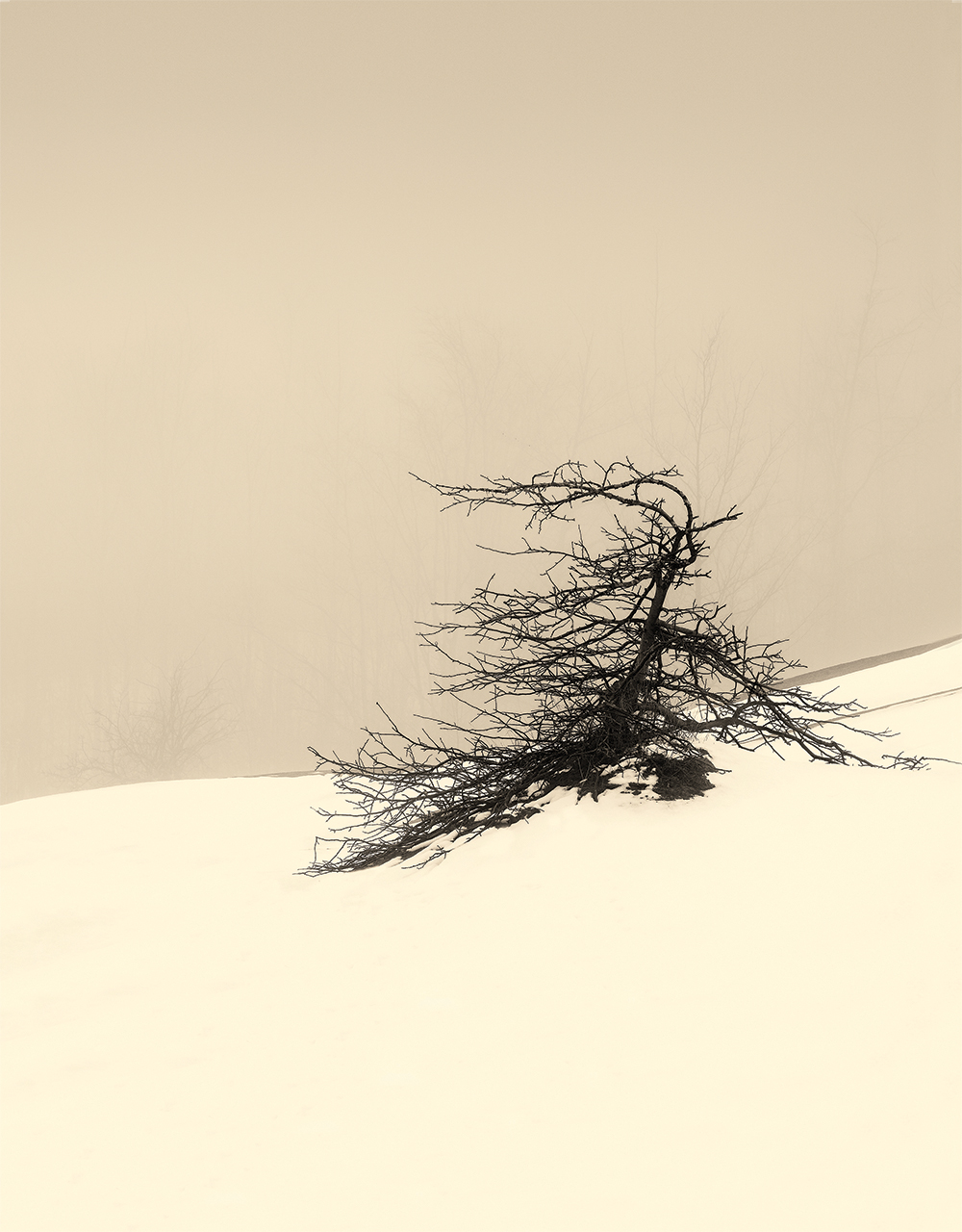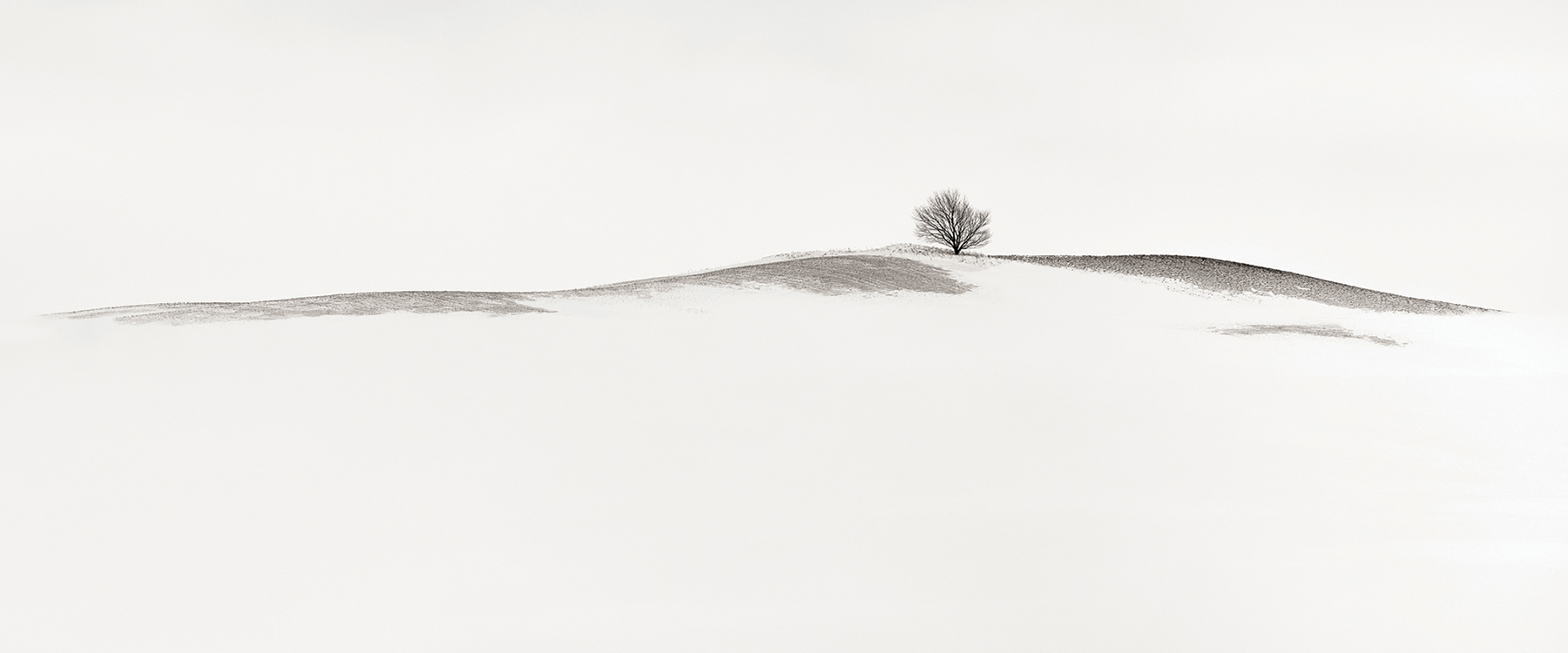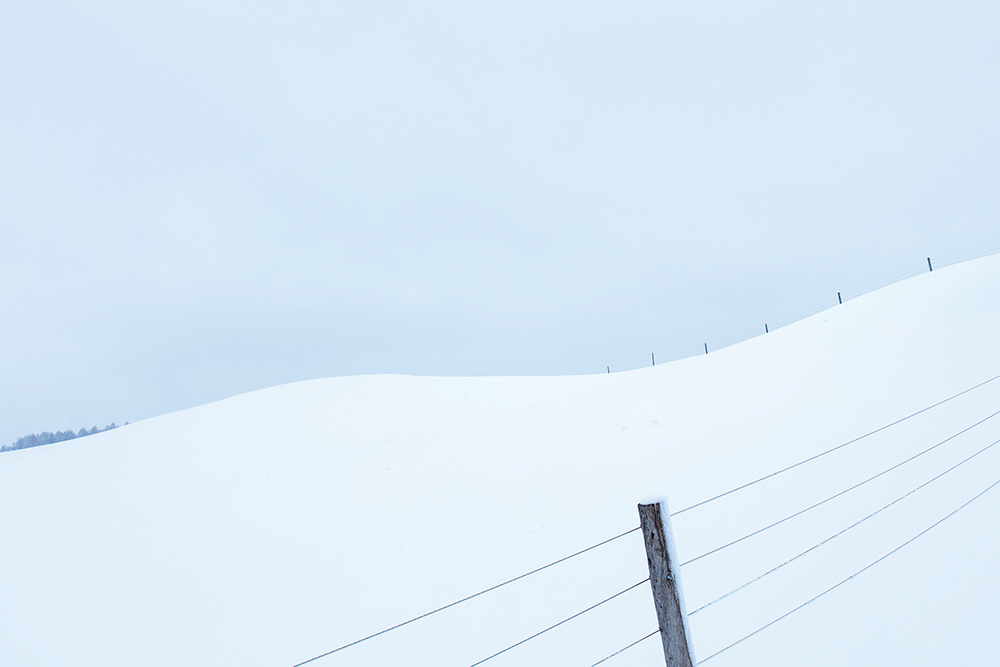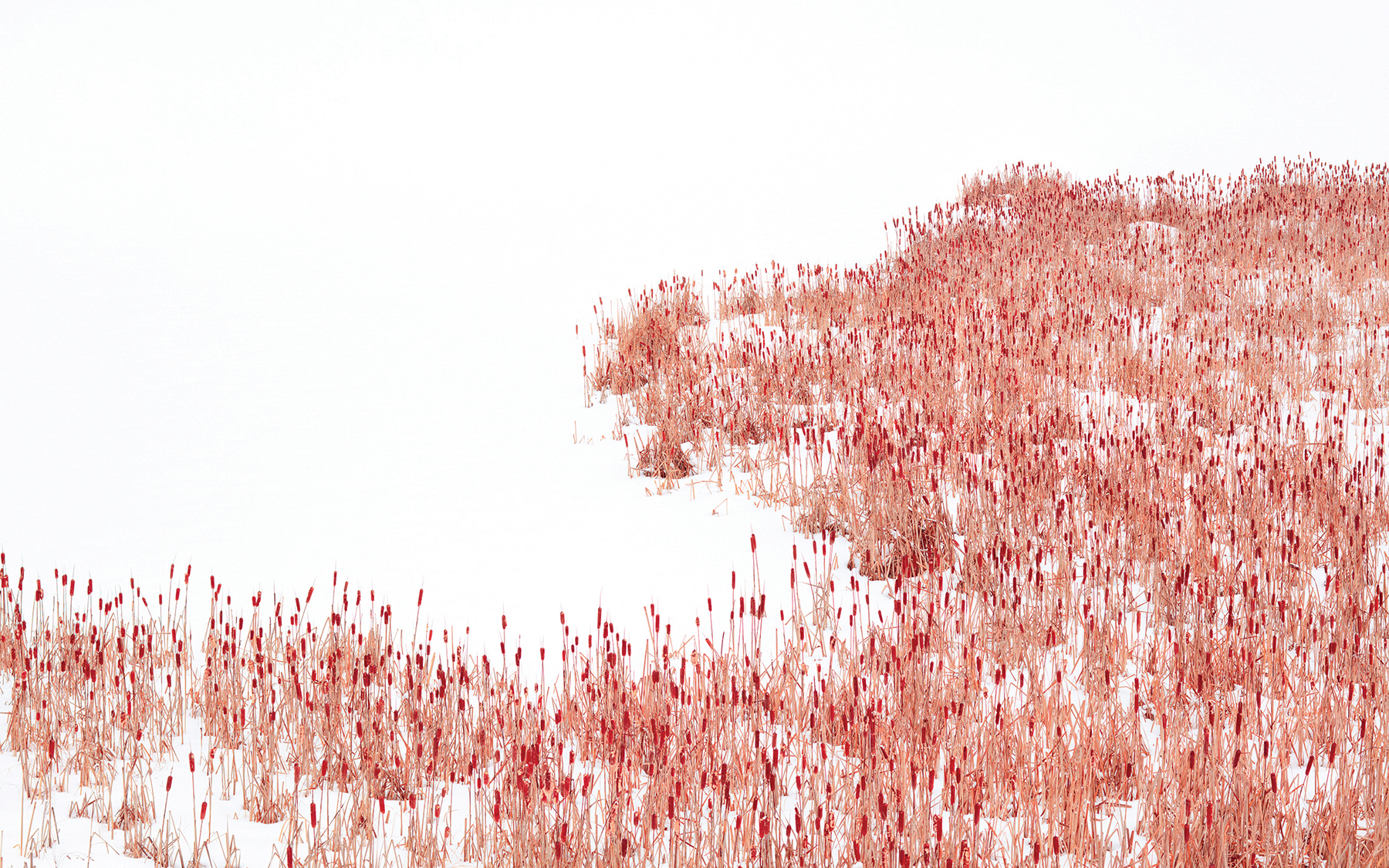Award-winning photographer Peter Dušek launched an artistic career with a combination of nerve, luck and timing—and poetic photographs that carry a message for living.
By Laurie Stephens // Photography By Peter Dušek

The gnarly old tree, its branches twisted and bare, wages an epic battle of wills against an unrelenting wind. Its solitary struggle is set upon a stark canvas of sepia-toned sky and snow.
In this photograph, less is more.
And that’s the signature goal of Peter Dušek, an award-winning photographer who creates art through the lens of his camera. His artistic tagline is, “As little as possible, as much as necessary.”
The lone stunted tree is the subject of one of his most successful pieces, which helped launch his trajectory as an artist. Called the Cheltenham Badlands, the photograph was taken just north of Brampton in the dead of winter and is the focal point of an exhibition called “Tranquility.”
“What I use the snow for, usually, is to be able to start with a clean white canvas, like a painter would,” says Dušek. “Then I look for objects to place on it, like a painter would draw on a blank canvas. I also look for poetic trees, which are really hard to find.”
Its solitary struggle is set upon a stark canvas of sepia-toned sky and snow.
A towering figure with a gentle demeanor, Dušek, 55, moved to Canada from Slovakia when he was seven. He now resides in Hockley Valley and operates his own gallery in Creemore.
He is an unlikely artist, having started his first career in computer programming and development armed with a math degree. However, after 20 years in that field, he felt that any creativity in programming had been replaced by a business environment of stringent rules and testing.
That’s when he looked for another creative outlet and decided to try photography. Over the years, he would ride his trail bike or go on motorcycle and car excursions to explore the countryside with his Canon camera.
As his style developed, he found that it was heavily influenced by his study in his early 20s of Eastern philosophies that taught such concepts as simplicity, tranquility and contemplation.
“I’d also been studying famous world-level top photographers and I kind of discovered a style that I fell in love with, which was black and white. I had taken colour photographs, but they didn’t work well, and suddenly I realized that if I made them black and white, they suddenly made sense,” Dušek says.

Shibumi—“Poetic trees are really hard to find.”

Rendezvous—“As little as possible, as much as necessary.”
Treescape—Inspired by Eastern philosophies of simplicity, tranquility and contemplation.

While his career transition took place over several years, his breakthrough as a successful artist was a combination of nerve, luck and timing.
He had joined a local art group near Orangeville, called Headwaters Arts, and his work was displayed in a few art shows in the area. However, a chance encounter with a prominent Toronto gallery owner in 2015 proved to be the catalyst for his new career.
While on a photo assignment in downtown Toronto, he couldn’t find the location of his subject, so he entered the nearby Abbozzo Gallery to ask for directions and struck up a conversation with the gallery owner.
“On the way out, I kind of had this moment of boldness and asked if I could take her out to lunch to talk about how I could start expanding my art into the Toronto area, and she agreed to that,” he recalls. “A few weeks later, we had the lunch and I showed her my portfolio, not really expecting anything, and then a month later she called back and offered me a solo exhibition.”
As luck would have it, at the same time his works from “Tranquility” were displayed on Abbozzo’s walls, corporate buyers from Saks Fifth Avenue were searching Toronto galleries for art for new stores. The company bought his entire exhibition twice over—38 pieces in total.
“It was mind-blowing—like winning the artist lottery,” Dušek says. “Saks Fifth Avenue is seen as a very high-level purveyor of style and design, so that’s what gave me a clue that maybe there’s something to the art I had been creating.
“But I was just in there at the right time. If the show had been just a few weeks earlier or later, they would have just walked through never having seen it, so that’s the luck part. But you also have to be prepared, so I did have the right work.”
The Saks purchase was the sign he needed to move away from computer consulting to become a full-time artist. Now, he scours the Ontario countryside looking for his next subject matter.
His shoots can seldom be planned. He gathers ideas of local areas he wants to explore and then frequently consults weather forecasts and radar maps. He usually heads out when it is foggy, overcast or snowing hard because those conditions let him better control his “canvas.”

“But that’s also the advantage of photography-based art. Even though it’s artistic, there’s a direct link to reality. With painters, there’s not necessarily a link to anything real, whereas everything in my artwork is real, it exists.”
Once back home, Dušek makes edits to his canvas, deleting objects that a painter wouldn’t have added—like telephone posts or wires—and adds tones to create an emotional, spare landscape.
Ultimately, he aims to draw connections between his art and people’s lives by focusing on empty space.
“Too many things are going on in our lives, leaving us no time to think about why we are doing it,” he says. “We don’t have that empty space. My message is to try to remove things to give yourself the space, and to focus on the things which really have meaning to you.”
To view Dušek’s work and chat with the artist, visit the Peter Dušek Gallery at 151 Mill Street in Creemore.














